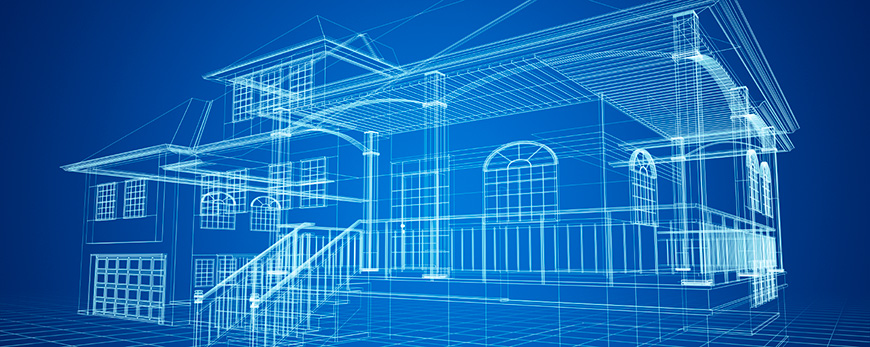Exactly How CDA Architects Incorporate Eco-Friendly Practices in Architectural Projects
Recognizing the Collaborative Process In Between Designers and Engineers in Modern Building And Construction Projects
The collaborative procedure in between designers and engineers is essential in modern-day building jobs, as it balances design intent with engineering feasibility. Exploring these characteristics exposes understandings that can considerably influence job end results and total industry requirements.
The Relevance of Collaboration
The joint harmony between architects and engineers is important for the effective realization of any kind of building and construction task. This collaboration unites distinctive experience and point of views, enabling the combination of ingenious design with sensible engineering solutions. By working together, engineers and designers can ensure that a task not just meets aesthetic and useful requirements however additionally sticks to security, sustainability, and budgetary constraints.
Collaboration fosters a common vision, promoting the alignment of goals and assumptions from the beginning. This positioning is vital in resolving possible challenges and mitigating threats that could emerge during the task lifecycle. A joint approach allows for the reliable allowance of resources, optimizing both time and cost.
The value of partnership expands to the iterative process of layout and building and construction, where comments from engineers can inform building choices, bring about even more practical and lasting styles. Alternatively, designers can inspire engineers to assume creatively regarding how to attain architectural stability without jeopardizing imaginative intent. Eventually, the collaborative relationship between architects and designers is not just advantageous; it is basic to the development of premium, useful, and innovative built settings that fulfill the demands of culture.
Communication Methods and Tools
Reliable interaction techniques and tools are essential for promoting partnership between designers and designers throughout the task lifecycle. Developing clear channels of interaction is important to guarantee that all team members are lined up with task purposes, timelines, and responsibilities. Routine meetings, both in-person and digital, give possibilities for stakeholders to talk about progress, address concerns, and make informed decisions.

Furthermore, adopting collective communication devices, such as Slack or Microsoft Teams, permits immediate messaging, data sharing, and ongoing conversations, promoting a more nimble feedback to emerging problems. Document management systems also play an essential role in organizing task documentation, guaranteeing that all group members have access to the most recent details.
Shared Goals and Project Vision
A linked task vision works as the structure for successful partnership in between engineers and engineers (cda architects). This shared vision not just straightens the efforts of both events however also develops a typical framework for decision-making throughout the job's lifecycle. By expressing clear objectives, stakeholders can effectively browse the intricacies of modern-day building and construction tasks, guaranteeing that both aesthetic and practical needs are fulfilled
Developing shared goals includes open dialogue and a detailed understanding of each discipline's contributions. Designers normally concentrate on design intent, spatial connections, and customer experience, while designers stress structural integrity, systems performance, and compliance with regulations. When these point of views are lined up, the outcome is pop over to these guys a natural job that follows both imaginative ambitions and technical feasibility.
Moreover, a distinct job vision fosters accountability amongst staff member, urging each individual to take ownership of their duty in accomplishing the preferred outcome. Normal check-ins and collective workshops can further enhance this commitment, allowing for modifications to be made as the task evolves. Ultimately, a common vision not only improves synergy yet additionally boosts the quality of the last deliverable, leading to effective project conclusion.
The Role of Modern Technology
Leveraging technology has come to be important in improving collaboration between engineers and engineers. Structure Details Modeling (BIM) stands out as a pivotal innovation, permitting both architects and engineers to develop comprehensive 3D designs that envelop design intent and architectural stability.
Furthermore, cloud-based platforms allow smooth cooperation, allowing job stakeholders to gain access to and upgrade task information from anywhere. This promotes a society of transparency and responsibility, as modifications can be tracked and examined in real-time. In addition, mobile applications more improve communication, offering on-site teams with immediate accessibility to task requirements and updates.
Arising modern technologies such as fabricated knowledge and artificial intelligence are additionally starting to play a function in predictive analysis, aiding groups determine potential issues prior to they emerge. Inevitably, the duty of innovation in architecture-engineering partnership Bonuses not only enhances process efficiencies however also boosts advancement, resulting in even more successful project end results. By accepting these technical improvements, architects and engineers can guarantee an extra natural and efficient joint process throughout the construction lifecycle.
Instance Research Studies in Successful Collaborations
Many study illustrate the extensive impact of efficient partnerships between architects and engineers on task end results. One remarkable example is the cooperation on the High Line in New York City, where landscape designers, engineers, and urban organizers worked with each other to change an abandoned rail line into a vivid public park. This multidisciplinary method not only boosted the visual quality however likewise made certain structural safety and environmental sustainability.

The Burj Khalifa in visit this site right here Dubai even more demonstrates the significance of collaborative initiatives - cda architects. The assimilation of design and engineering know-how allowed the job team to achieve extraordinary elevations while adhering to safety regulations and visual vision
These instances underscore the importance of interaction, trust fund, and shared purposes. In today's complicated building environment, such partnerships are vital to navigating obstacles and providing tasks that satisfy both practical and visionary objectives.
Verdict
In verdict, the collaboration between engineers and engineers is crucial for the success of modern building projects. Efficient interaction techniques, a shared job vision, and the integration of innovative technologies are vital parts that facilitate this partnership.